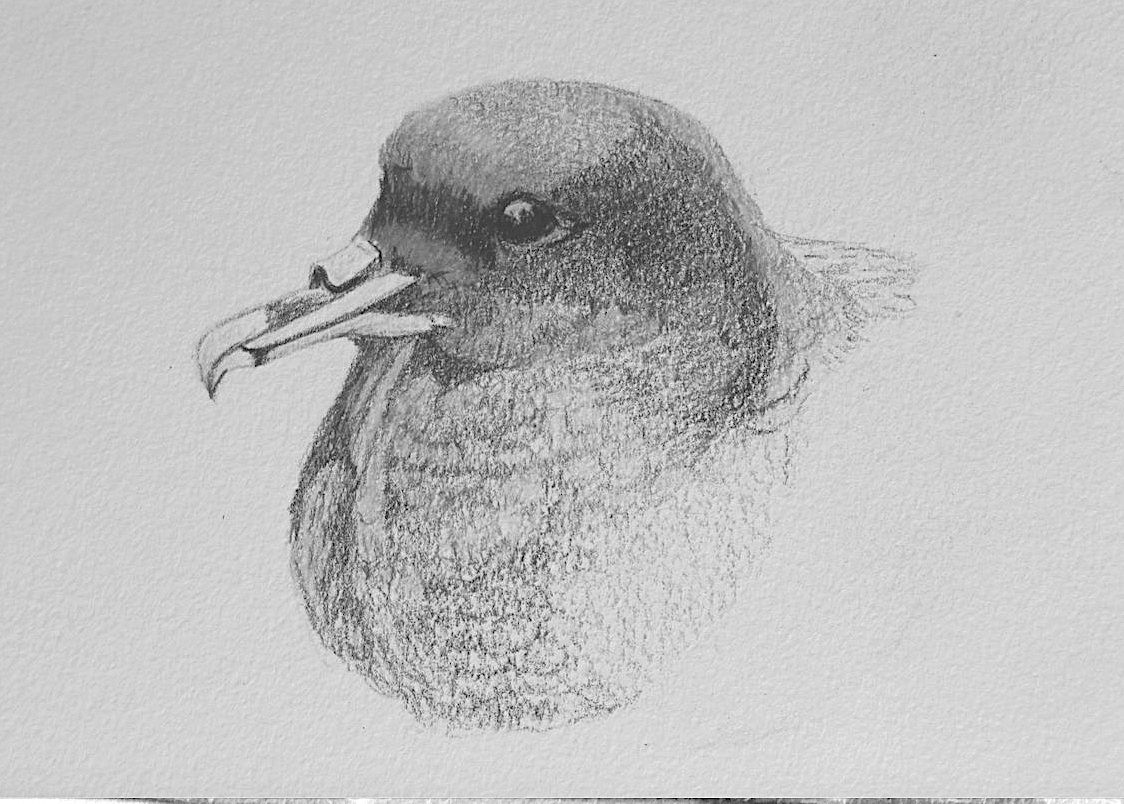
White-chinned Petrel by ABUN artist Judith MacKay; after a photograph by Andy Wood
Graeme Elliott and Kath Walker (Albatross Research) have reported to New Zealand’s Department of Conservation via its Conservation Services Programme (CSP) on a survey of globally Vulnerable White-chinned Petrels Procellaria aequinoctialis on Antipodes Island.
The final report’s abstract follows:
“During the summers of 2020-21 and 2021-22 the area of land occupied by white-chinned petrels on Antipodes Island was assessed along with burrow density and burrow occupancy which were combined to produce an estimate of the total size of the white-chinned petrel population there. This was compared with similar estimates made in 2008–2011, and the potential impact of landslides in 2014 and the eradication of mice from Antipodes I in 2016 on the current size of the white-chinned population was assessed. The most recent population estimate is larger than that made in 2008-2011, but the confidence intervals about both estimates are so large that it is not reasonable to conclude there has been any population change. The 2008–2011 and 2021–2022 estimates in combination suggest the population comprises ~46,000 breeding pairs.
The landslides in 2014 destroyed 5.6% of the white-chinned petrel burrows and as birds were incubating at the time of the landslides, up to 2.6% of the breeding population was killed. Subsequently the land on which the landslides occurred has been unsuitable for white-chinned petrel burrows and the birds that used these places have either died, moved, or stopped breeding.
Although mice are known to prey on white-chinned petrels, any improvement in nesting success because of the mouse eradication has not had sufficient time to be reflected in the size of the breeding population.
The use of distance sampling for assessing burrow density, as well as the explicit assessment of the effectiveness of burrow occupancy measurement techniques are useful improvements in white-chinned petrel population size assessment techniques. With greater field effort and increased sample sizes these tools could provide more precise estimates of population size, though even with these improvements, estimates of population size are not precise enough to reliably detect population trends. Detection of population change is likely to be more easily achieved with an intensive mark-recapture study of birds in a representative study population.”
Reference:
Elliot, G. & Walker K. 2022. Estimating the number of white-chinned petrels breeding on Antipodes Island. Nelson: Albatross Research. 17 pp.
John Cooper, ACAP News Correspondent, 10 August 2022

 English
English  Français
Français  Español
Español